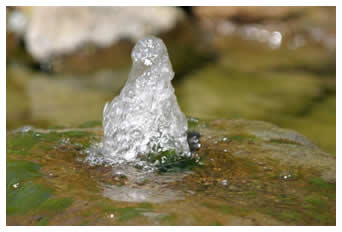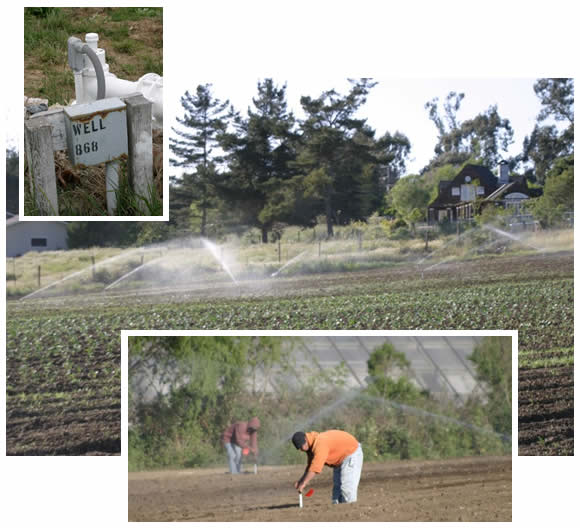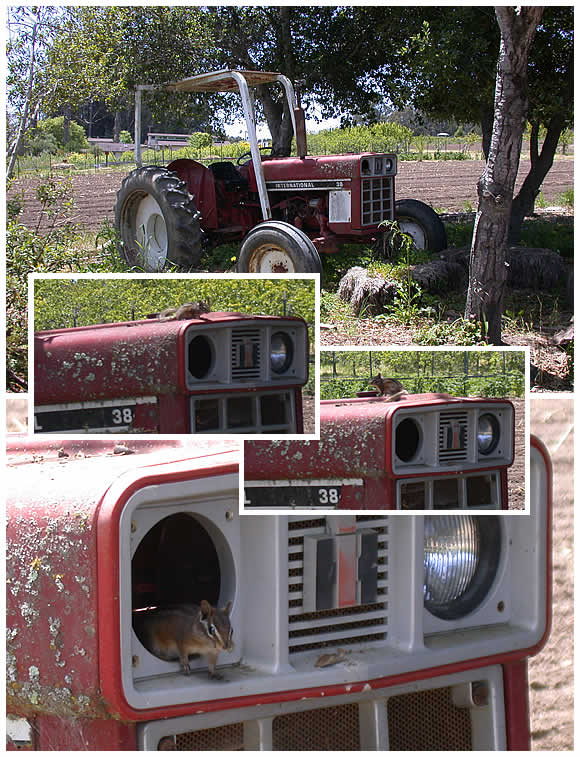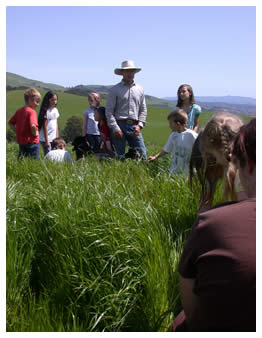What's in the box this week~~~~~~~~~~~~~~~~~~~~~~~~~~~~~~~~~~~~~~~~~~~~~~~~
Content differences between Family and
Small shares are in red; items with a
"+" in one size share are more in quantity than in the other. For any items
not from our farm, we will identify the source in parentheses. Occasionally content will differ
from this list (typically we make a substitution), but we do our best to
give you an accurate projection.
Family Share
Arugula +
Broccoli +
Carrots
Chard
Fava beans (shelled and bagged) +
Green garlic
Kale
Lettuce or Napa Cabbage
Young
onions
Rapini (broccoli rabe) +
Spinach
Summer squash +
2 baskets
Strawberries
Small Share
Arugula
Broccoli
Carrots
Chard
Fava beans (shelled and bagged)
Green garlic
Lettuce
Young onions
Rapini (broccoli rabe)
Spinach
Summer squash
2 baskets Strawberries
Bread Option
This week's bread will be caraway rye
Extra Fruit
4 baskets of Strawberries
Fruit Bounty is 'on' this week (floating week #3 of 15)
4 baskets of Strawberries
|
Precious Water
~~~~~~~~~~~~~~~~~~~~~~~~~~~~~~~~~~~~~~~~~~~~~~~~  Although we are experiencing unseasonably cool, wet weather this spring (and more rain is on its way again this week), the volume and frequency of these precipitation patterns are just enough to keep weeds thriving but insufficient to meet the water needs of our field crops. Just like humans can't survive for more than three days without water, the fertility of our crops and the abundance of our harvests depend on a reliable source of water. Except for a few crops that are dry-farmed, all our crops are irrigated with groundwater that is pumped through wells from an aquifer hundreds of feet beneath the surface. According to our records, last year we used approximately 50 acre-feet of water to raise 80 acres of crops. To picture how much that is, imagine a football field (an acre is a little less than a football field) covered 50 feet high with water; that's the equivalent of 16 million gallons. That's a lot of water! All domestic and agricultural water in the Pajaro Valley, an area of about 70,000 acres, is supplied by the Groundwater Basin below it. Since the 1850's when the first settlers moved into the area to farm, agricultural development has expanded from potatoes, grains, apples, and a variety of truck crops to a high value, predominantly berry, production system. Today, about half (35,000 acres) of the basin is in irrigated agriculture. In the 1950's concerns of over-pumping were first identified, and today everybody is in agreement that the basin is over-drafted, causing saltwater intrusion along the coastal areas where land is most intensely farmed. A local agency was formed to help in this task of addressing this problem. For more than twenty years they spent a lot of money studying the problem, eventually going into debt, without implementing viable long term solutions. To prevent serious water shortages in the future, it might help to look at other parts of the world where dwindling freshwater supplies are threatening the health and living standards of millions of people and undermining the agricultural productivity of the land. In some countries, such as Peru, water is so scarce that people in arid environments along the coast measure their survival in drops not gallons. The situation is so desperate that people collect water by capturing fog-droplets in giant nets stretched out across the landscape, mimicking the way redwood trees collect water to survive dry summers. Over the last few years, the Pajaro Valley has become a battleground over the issue of water, creating deep rifts and mistrust among many members of the community. It is increasingly important to educate the public about the decisions that need to be made and actions that must be taken, to prevent special interests from calling the shots and squandering this resource for short term monetary gain instead of promoting watershed based policies that manage water resources equitably among all. Here at the farm where we grow over 50 different crops over the course of the season, irrigation is a big job. Water is pumped from wells, some at a rate of 200-300 gallons per minute, through an intricate system of tanks, pumps, pipes, hoses, sprinklers and valves, to reach every plant in the field. On average, we have to put about an inch of water on our crops every week. Water requirements vary from crop to crop; for example, spinach may need more but green beans much less. Also, a mature crop will need more water less frequently, whereas a recently planted crop needs less water more frequently. Cool weather crops such as broccoli, cauliflower, lettuce, and most leafy greens like to be irrigated with above ground movable aluminum pipe sprinklers, while other crops such as strawberries, tomatoes, peppers, squash, cucumbers, and eggplants we drip irrigate. Sometimes we don't irrigate at all, as is the case with our dry-farmed tomatoes, and this year, given the late rains, our potato crop will grow to maturity without supplemental irrigation. Growing food requires a lot of water, and it is critical that as farmers we implement cropping systems and irrigation measures that maximize conservation and manage freshwater efficiently. - Tom  |

Community Farm Day - this Saturday, May 29th!
~~~~~~~~~~~~~~~~~~~~~~~~~~~~~~~~~~~~~~~~~~~~~~~~ We are looking forward to seeing you on the farm this Saturday! Remember, this is a wonderful opportunity to come "Pick your own Strawberries" and get to see the farm at the same time. CSA Members and Friends in the same car attend for FREE.
Non members and extra carloads, $10-15 donation. Location: come to 172 Litchfield Lane, our "Upper Barn", for Parking [ click here for directions. Be sure to scroll down to directions "For
Farm Visits and Events" or you'll end up at the wrong
location!] Schedule of Events: 10am - Welcome and Meet to Start the Day 10:15 am - Farm Walk to U-Pick Strawberry Patch (1/2 hour) 11am to 4pm - (i.e. ongoing throughout the day) Strawberry U-Pick (bring your own containers if you like) $1.50/basket, $15/flat (12 baskets) 11am - Tractor Ride to Hedgerow Planting (15 min) 11:15am to 1pm - Hedgerow Planting, Upper Field by the Redwood Grove If you arrive late you are welcome to walk (maps will be provided) *** Tractor will be shuttling between Strawberry Patch and Hedgerow Planting*** 1pm to 2pm - break for Lunch (pack a picnic!) 2pm to 3pm - Milking the Goats & Cheese Making Demonstration Help David (LEF Journeyman Farmer) plant out his field with Flowers, Tomatoes, Peppers and other fun crops. 3pm - 4pm - Make your own Dessert Pizza in our Cob Oven (Bring your own dough and toppings, or use strawberries harvested on the farm sprinkled with sugar) Bring warm clothing, good walking shoes, gloves, water bottle, hat and sunscreen.If you plan on attending please RSVP by email to Farmer Tom at thomas@baymoon.com, so we have some idea of how many folks are coming. |
Wildlife in the Tractor...?
~~~~~~~~~~~~~~~~~~~~~~~~~~~~~~~~~~~~~~~~~~~~~~~~ If you've ever been to the farm, you'll recognize the old International tractor, now a fixture in the landscape as well as a popular climbing structure for kids of all ages. Recently while walking the farm, I heard a chittering sound coming from its direction. Thinking it was a bird of some sort I ventured closer, only to see a chipmunk perched on top, scolding some unseen adversary. Naturally he was wary of my approach, and quickly disappeared through the gap around the gas cap on the hood... only to pop out through the empty headlight socket to see if I'd gone! One wonders if he has a nest inside... - Debbie  |
First Person Certified
~~~~~~~~~~~~~~~~~~~~~~~~~~~~~~~~~~~~~~~~~~~~~~~~ By now everyone is familiar with the phrase "third party certified", meaning that an independent auditor (i.e. the "third party") is hired (or required) to review a business's operation periodically in order to 'certify' that certain 'standards' are being upheld. In the case of food, this type of certification becomes necessary when there is such distance between you and the producer of your food that you must rely on a 'third party' to verify that which you cannot verify for yourself. When I was at Joe and Julie Morris's Spring Field Day last month, however, Julie made a profound observation on the topic of 'certification' - and that is what I wanted to share with you today. She is of course referring to the beef cattle that they raise for their Morris Grassfed Beef, but what she says applies equally to farms like Live Earth Farm and TLC Ranch (i.e. any small farms that have a direct relationship with their customers). I hope you will read and enjoy... and I hope it makes you think! - Debbiefrom the Morris Grassfed Beef May 2010 newsletter:  "As a local food producer, it is essential that we capture the close connections we have with our customers. It's our market advantage. And
it's unique. I call it "First-Person Certified." Our customers are able
to see the land where their beef is born and raised. Their children can
touch and smell the grass. They ask great questions - as one did
yesterday - about how old the cattle are before they die and how they
are processed and handled. These things are as important to our
customers as they are to us, and we want to share that knowledge. I
spoke to one customer, concerned about how the animals are treated, for a
half hour. I assured her that we carefully choose the facilities where
the animals are processed. We accompany each load and make sure they are
using low-stress handling techniques developed by Temple Grandin (www.grandin.com) and established
Hazard Analysis Critical Control Points (HACCP) programs. We have
agreements with each of our slaughterhouses that they follow our strict
guidelines and we monitor it regularly. And then I told her to feel free
to call these facilities directly if she wanted to hear it from them,
first person. "Our customers are our certified verification auditors. If they see
something they don't like (which we haven't experienced) they won't buy
from us. It's about as rigorous an audit as a company can have. When I
used the term "First-Person Certified" yesterday, one person told me I
should copyright it so others won't use it. As I thought about it later,
the term protects its own integrity by its very meaning: if you're not
dealing with your customers directly, then you're not first-person
certified. And your customers will know this. "One woman told me that on our delivery day she arrived to meet our
truck and was surprised to see Joe, delivering the meat himself. "I
didn't expect that you guys would be the ones actually delivering the
beef!" she said in amazement. That's first-person certified. We answer
our own phone (or call back if we're not in the office), we raise our
own cattle, we choose our own processing facilities (and we're picky),
we are accountable for the quality of our product from its conception to
delivery. I think that is what differentiates the local food movement
from others: we are first-person." this is an excerpt from Julie's blog. To read the full post, log on to: http://localfood.wordpress.com |
TLC Ranch needs your help!
~~~~~~~~~~~~~~~~~~~~~~~~~~~~~~~~~~~~~~~~~~~~~~~~ If you are a fan of the wonderful eggs we've been receiving through our CSA, please read on: Jim Dunlop of TLC Ranch had been stymied for weeks over why his egg production seemed to be creeping down at a time of year when it should be at its peak. Only very recently did he discover the cause: someone had been stealing chickens from his laying flock in small increments over the last month! By the time he figured this out, he was down 300 hens - a huge blow to his farm and his farm income, representing at least $50,000 in lost revenue this year and another $50,000 in next year's egg production gone. So Jim is reaching out to his loyal customers and asking for help. Helping is easy - they are asking everyone to "adopt a hen", so that they can replace the stolen birds. Jim says each ready-to-lay organic pullet costs $15. So if everyone who gets an Egg Option through our CSA adopted just one hen, it would make a huge difference. Click here to go to TLC's website, where they've set
up a donation button to make it easy to contribute. You do not have to
have a PayPal account. There are very few farms out there now where you can get eggs of this quality and integrity - from birds that are genuinely raised outdoors on green pasture. I encourage everyone - even if you're not an egg-member - to help TLC out. This kind of farming needs to be preserved. We want more farms and farmers like Jim. Folks who donate will be invited to a TLC Ranch farm tour on June 27 as thanks; if you haven't been to TLC Ranch yet, you should definitely go - see first-hand where your eggs come from and how the animals are cared for! Be your own 'first person certifier'! (see Julie Morris's story, above.) Thanks! Debbie PS - Egg Option members should be especially thankful to be receiving TLC's eggs right now... because of the lost production, Jim has pulled out of farmers markets in order to maintain his commitment to delivering eggs to Live Earth Farm for our CSA. That's a commitment worth supporting! |
LEF Discovery Program Update
~~~~~~~~~~~~~~~~~~~~~~~~~~~~~~~~~~~~~~~~~~~~~~~~ from Jessica Ridgeway Bill Mollison, in his massive text Permaculture: A Designer's
Manual, discusses in great philosophical detail the "edge effect." Edge effect is an ecological term,
describing the special phenomena that occur at the meeting point of two niches,
events, etc. In nature, where two
niches meet, there is exponentially more biodiversity than in either of the
niches individually. There are the
plants and creatures of each niche, as well as the plants and creatures that
live only in the boarder area. A
greater number of events also occur at edges. I did my best to explain this effect to the Wavecrest
Montessori students this week, and in doing so realized that I am currently
experiencing an edge effect. During this time of the year the Discovery Program is hosting a great
number of school tours, while our year long programs wind down, and our summer
programs and responsibilities build up. We are on the cusp, the end of the school year, the beginning of the
summer vacation, the end of spring, the beginning of summer, and it is exhilarating! In this past week and the one coming we are
hosting a string of older students. Last Wednesday we hosted E.A. Hall Middle School for their final visit of
the year. We had a
well informed middle school group from Cesar Chavez Middle School on Friday, a
Cabrillo College sustainable agriculture class on Saturday, and two groups from
Pajaro Valley High School will be joining us on Monday. The preschool and early elementary groups we host so often
are a lot of fun to explore the farm with. But with these older groups, we get to explore not only the
physical landscape and its inhabitants with our five senses, but also
sustainable agriculture theory and practices, and more complex topics such as
the triple bottom line. While teenagers
can be a bit of a challenge at this time of year, it is rewarding when you
inspire even a few. Taylor and I
are looking forward to the month of June as a time to get a lot done in the
Discovery Garden, and to prepare for our next big challenge, Art on the Farm Camp in July. We hope to see many
of you along the way.
|
Notes from Debbie's Kitchen~~~~~~~~~~~~~~~~~~~~~~~~~~~~~~~~~~~~~~~~~~~~~~~~ Click here to go to the recipe database.Some members have been emailing me with questions and comments about salt in cooking, and oxalic acid in certain leafy greens... and I am not one to dispense medical or nutritional advice. All I can express is my opinion, and I firmly believe that if you eat a varied diet that includes a diversity of organic fruits and vegetables, grains, legumes, cultured and fermented foods, and protein from animals raised on pasture, avoid processed foods (I'm talking commercially processed, not home canned), use good quality un-processed salt, get regular exercise and sleep, and have camaraderie, love and laughter in your lives... that's about the best you can do for your health! And since so much of camaraderie and joy centers around mealtime - this is why you receive my constant and heartfelt efforts to bring you different ways to help you prepare the food you receive from the farm each week. So without further ado, let's see what recipes I can 'cook up'! - DebbieFirst off, I am very excited we are getting the broccoli rabe. This is an utterly delicious veggie! It can be simply prepared: steamed until al-dente, then serve drizzled with a little good olive oil, a squeeze of lemon (got any meyer lemons left?), and a sprinkling of good sea salt. Some folks like to add a little crushed red pepper. Here's a variation I'm interested in trying though:
Warm Broccoli Rabe with Orange and Nuts(this is heavily modified from an old SJ Mercury news clipping; okay, actually, I changed it completely - but it was inspired by the clipping!) Serves 2 Salt 1 bunch broccoli rabe 1 flavorful orange (or blood orange, or tangerine) half a lemon (meyer, if you have it) 1 shallot 1 smallish stalk green garlic (or 2 cloves, if you don't have green garlic) olive oil toasted nuts (walnuts or pecans or pine nuts) Before cutting up your orange, grate off 1/4 tsp. or so of the zest. Finely chop shallot and green garlic, then saute them, along with the zest, in a medium pan with a pinch of salt and few grinds of black pepper. Do not let garlic brown. Turn off heat and set aside. Cut top and bottom off orange; set cut side down, and run knife blade down sides of orange to cut peel from fruit. Save any pieces of peel (like the top and bottom) that have some orange still clinging. You can squeeze this over everything at the end. Slice orange horizontally and cut slices into quarters. Steam broccoli rabe until just tender, then transfer to skillet with garlic-shallot-oil and toss to coat. Squeeze lemon juice over rabe (and any juice from the fruit attached to the orange peels, described above), then transfer to plates, distributing orange pieces on top of rabe, then scattering chopped toasted nuts on top of that. Sprinkle with additional salt, to taste, and enjoy!
How about another fava recipe? This one was given to me 8 years ago by a member who'd lovingly hand-written several recipes for me on 3 x 5 cards. It was in my 'fava bean' recipe file, waiting for this day to emerge!Risotto with Favasfrom the kitchen of Mary Frances Miles serves 8 1 lb. fresh fava beans 7 to 8 C chicken or vegetable broth 2 tbsp. olive oil 3 tbsp. unsalted butter, divided for use 1 medium onion, chopped 2 C arborio rice 1/3 C dry sherry 1/2 C grated Reggiano Parmigiano cheese, plus extra for garnish Salt and pepper to taste Shell favas. [Good news! This week we're going to receive our fresh favas already shelled!] Beans smaller than a thumbnail can be used with no further preparation, but if using larger favas, boil 1 minute, drain, plunge in cool water, peel and set aside. Heat broth and keep simmering. In a heavy-bottomed saucepan, heat olive oil and 1 tbsp. butter. Add onion and cook until translucent, about 5 minutes. Add rice and a pinch of salt and cook over low heat about 3 minutes, stirring often, until rice has turned translucent. Turn up heat and pour in sherry and stir until absorbed. Add just enough ot stock to cover rice, stir well. [Yes, risotto involves a lot of stirring!] Reduce heat. Keep rice at a gentle simmer and add stock, a ladle or two at a time, stirring until each addition has almost been completely absorbed by rice, then add more. After about 10 minutes, stir in favas. Continue adding stock and stirring until rice is al dente, about 45 - 50 minutes. Lastly, here's a yummy chard appetizer from my latest issue of Bon Appetit:Frittata Bites with Chard, Sausage and FetaModified only slightly ;-) Makes 20 bite-sized squares. "Perfect for a Cocktail Party", says the magazine, but leave off the cocktails and I bet the kids will like this one too!  Nonstick vegetable oil spray [I never use this stuff! I just use a little oil.] 1 bunch chard, leafy green portion only (stems/ribs removed) 1 tbsp. olive oil 1 C chopped onion 8 oz. mild Italian sausages, casings removed, broken into pieces 8 large eggs 1/4 C heavy cream [avoid "ultra-pasteurized" at all costs! That's bad stuff.] 1/2 tsp. salt 1/2 tsp. freshly ground black pepper 1 C crumbled feta cheese (about 4 1/2 oz) Fresh Italian parsley leaves, for garnish Preheat oven to 325 degrees. Spray [or wipe to lightly coat] an 8x8x2-inch glass baking dish with oil. Bring large pot of salted water to a boil. Add chard and cook until just wilted, about 2 minutes [probably less than that!]. Drain well - they suggest squeezing in a kitchen towel - and finely chop. Set aside. Heat oil in large skillet over medium-high heat. Add onion and saute until soft, 4 to 5 minutes. Add sausage and saute until brown and cooked through, breaking up with fork, 5 to 7 minutes more. Remove from heat and cool. Whisk eggs, cream, salt and pepper in a large bowl to blend. Add chard and cooled sausage mixture, then feta; stir to blend. Transfer mixture to prepared baking dish. Bake frittata until until set in center, 45 to 55 minutes. Transfer baking dish to a rack to cool about 15 to 20 minutes. Place platter atop dish with frittata and, using oven mitts, invert frittata onto platter. Place another platter [or a cookie sheet?] atop frittata and invert again so that frittata is right side up. Cut into 20 pieces. Can be served warm, or covered, refrigerated, and re-warmed and served the next day. Transfer frittata squares to a serving dish and garnish each with a piece of parsley; serve warm, or at room temperature. |
|
2010 CALENDAR
~~~~~~~~~~~~~~~~~~~~~~~~~~~~~~~~~~~~~~~~~~~~~~~~
Visit our website's calendar page for more details, including photos and videos of past events. This is a great way to get the flavor of what it is like visiting the farm!
Live Earth Farm Discovery Program for WEE ONES
3rd Tuesday of every month, 10:30am - Noon
(free for children 0 - 3 yrs; $10 - $15 per adult)
 Mothers, fathers, grandparents, caretakers of any kind... bring the babe in your arms to experience the diversity of our beautiful organic farm here in Watsonville. We will use our five senses to get to know the natural world around us. The farm is home to over 50 different fruits and vegetables, chicks, chickens, goats, piglets, and the many wild members of the Pajaro watershed. Mothers, fathers, grandparents, caretakers of any kind... bring the babe in your arms to experience the diversity of our beautiful organic farm here in Watsonville. We will use our five senses to get to know the natural world around us. The farm is home to over 50 different fruits and vegetables, chicks, chickens, goats, piglets, and the many wild members of the Pajaro watershed.
For more information, contact Jessica at the LEFDP office: (831) 728-2032 or email her at lefeducation@baymoon.com.

Happy Girl Kitchen's 2010 Workshop Schedule at LEF
(all workshops are from 10am to 3pm and include an organic lunch, as well as take-home items from what is made that day!)
March 6 (Saturday) - Fermentation (sauerkraut, kimchee and kombucha)
April 10 (Saturday) - Cheese and kefir
June 6 (Sunday) - Cherries and spring berries
July 10 (Saturday) - Apricots, strawberries and blackberries
September 12 (Sunday) - Heirloom tomatoes
October 2 (Saturday) - Pickles
Contact Jordan if you have any questions
jordan@happygirlkitchen.com
http://www.happygirlkitchen.com
Art on the Farm Summer Day Camp!
July 12th - 16th
click here for more information
Community Farm Days Schedule
(All Community Farm Days are Saturdays unless otherwise noted.)
March 20 - Sheep to Shawl
May 29 - Three sisters planting in the field! Help sow pumpkins, corn, and beans (update 5/24: see Event Schedule, above)
June 19 - Summer Solstice Celebration and Strawberry U-pick
July 3 - Apricot and Strawberry U-pick
July 12 thru 16 - Summer Celebration Art on the Farm Day Camp!
Aug 28 - Totally tomatoes. From farm to fork, cooking with tomatoes and making farm-fresh cheese. Also U-pick raspberry and tomato day!
Sept 25 - LEFDP Second Annual Fundraiser
Oct 23 - Harvest Celebration and Apple U-pick
Cob Building workshop
June 6th and 13th in Santa Cruz
Sunflower Cob Building of Santa Cruz
|
|